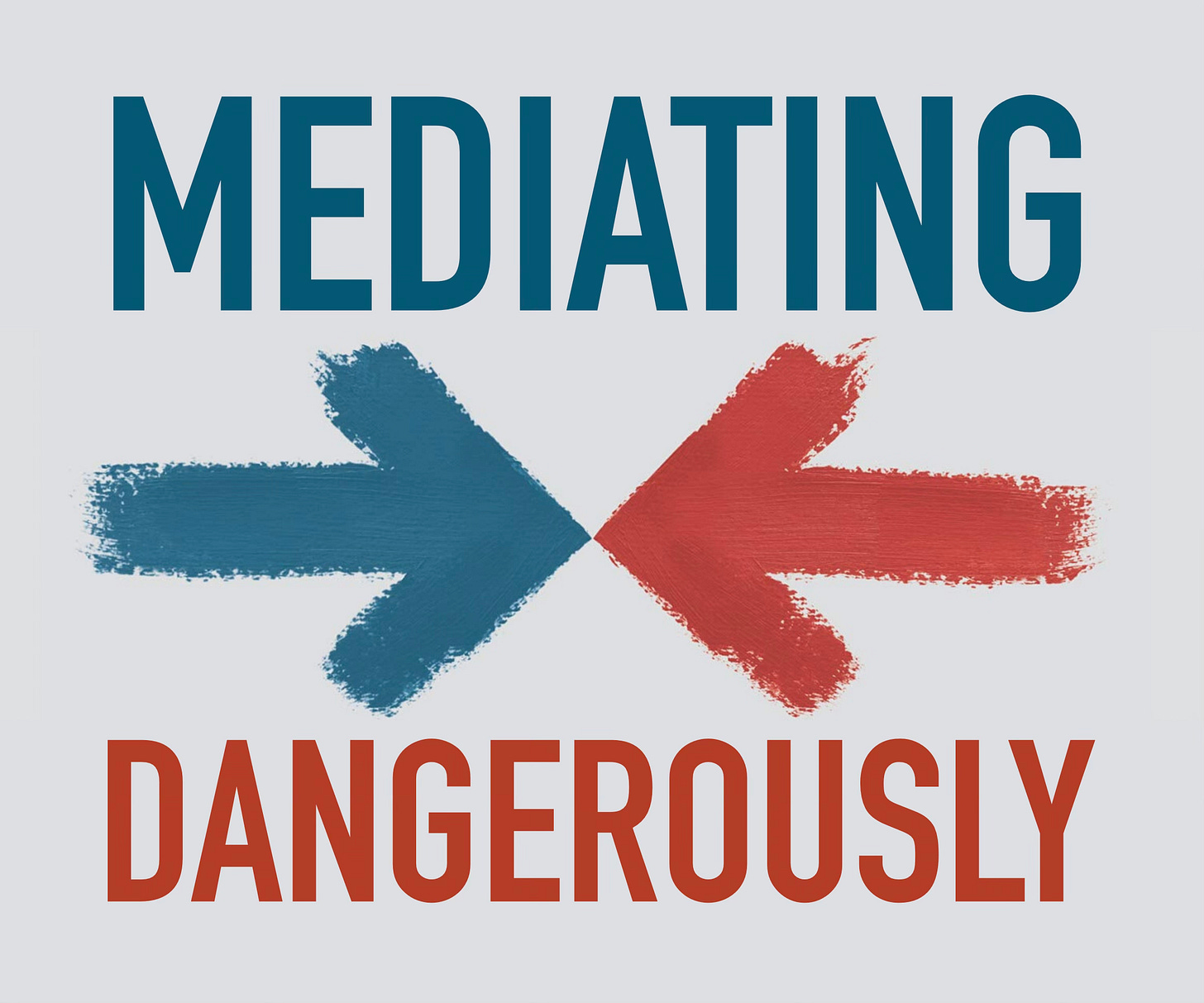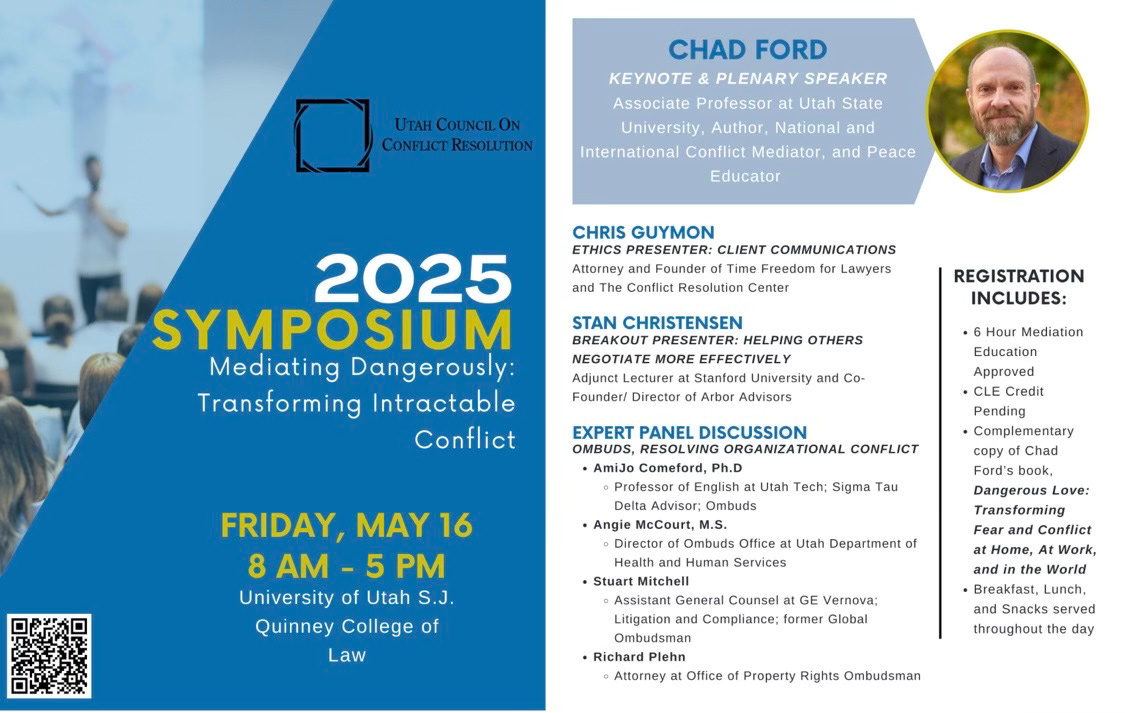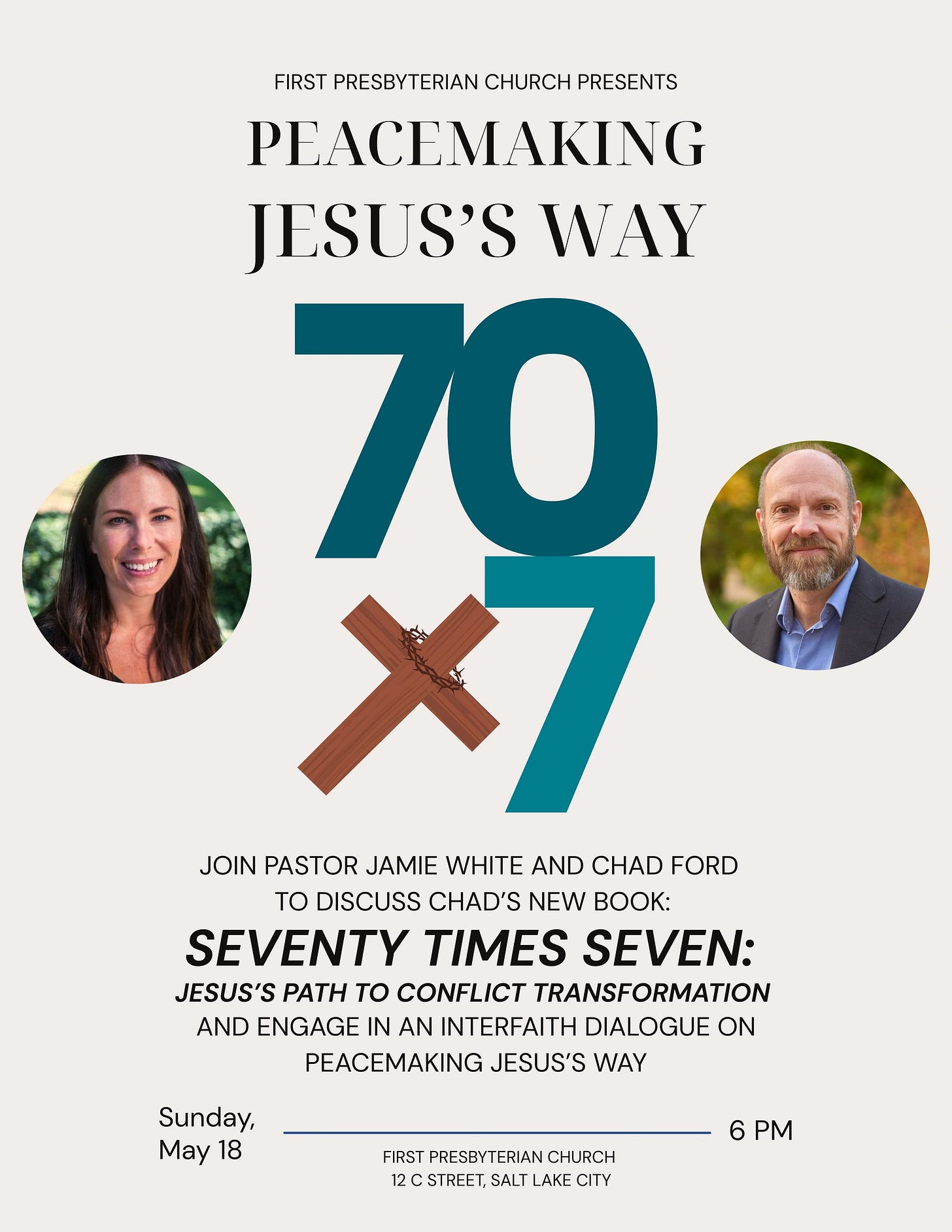Mediating Dangerously
Want to become a transformative mediator? Plus, a new PeaceMakers Needed video from LaShawn Williams and a new 70x7 event at the Harvard Divinity School
The world needs more mediators — people who are skilled at stepping into conflict and creating space so others can successfully navigate their own challenges.
Mediators are waymakers. They help people who feel stuck in conflict make a way out of no way.
In our increasingly intricate world, grasping the underlying causes, conditions, and dynamics of conflicts is essential for comprehending our relationships at home, at work, and globally.
Peacemaking is, of course, a mindset. How we think about conflict and how we see others while we are in conflict is always the bedrock to any real sustainable work. Learning how to navigate our own conflicts is critical to any peacebuilding model.
However, peacemaking also demands a specialized skill set. Mediation possesses some incredibly effective tools. Regrettably, there is a shortage of individuals with the inclination and expertise to guide others successfully through conflicts.
I’ve been working as a mediator for over twenty five years in virtually every setting imaginable — family, organizations, communities and internationally in larger scale religious and sociopolitical conflicts.
One great thing about mediation is that you never run out of work to do. There are so many needs at all of those levels and too few options for people that find themselves stuck in destructive conflict cycles.
When I say mediation, I want to distinguish between transactional mediation and the type of work I do, which is transformative mediation.
Transactional versus Transformative Mediation
Most places in the United States use a transactional mediation model. This model focuses on solving problems and reaching agreements in court. The main goal is to help people reach a practical agreement, often through compromise, to avoid the time and money of a trial. Transactional mediation is great at resolving cases quickly, but it often only looks at the immediate issue and doesn’t consider the underlying relationships between the parties.
Transactional mediation can be a helpful way to resolve disputes. But it’s often used only after people go to court, which can make things take longer to get sorted out. By the time people get to mediation, they may have already paid a lot of money in legal fees, been stressed out by preparing for court, and experienced the negative atmosphere of the court. This not only makes it take longer to resolve disputes, but it also makes it harder for people who want to resolve conflicts without the high costs of lawyers or the formalities of court. For many people, especially those who don’t have much money, the transactional model tied to the court system can be too expensive or not available to them.
In contrast, transformative mediation is a more accessible alternative. It gives people the chance to address disputes before they turn into legal battles, which can save them money and reduce stress.
The current system is particularly tricky when it comes to family disputes. It focuses on quick fixes over the long-term well-being of kids and parents. Many judges and lawyers I’ve talked to feel overwhelmed by the most complicated, emotional, and divisive family conflicts they deal with every day.
Transformative mediation is a creative way to help people deal with conflicts before they turn into legal battles. It’s a great way to save money and reduce stress. In transformative mediation, the focus is on empowering people and recognizing their worth. Instead of just fixing the problem, transformative mediation helps people change how they interact with each other. It encourages self-reflection, understanding, and taking control of their lives. This goes beyond just finding a solution; it addresses the root causes of conflicts and helps people build better relationships. In the end, transformative mediation leads to more lasting and satisfying results for everyone involved.
Robert Baruch Bush and Joseph Folger popularized the approach in the early 2000s with their groundbreaking book The Promise of Mediation. Since then scholars and practitioners like John Winslade, Gerald Monk, Sarah Cobb, Benard Mayer and Kenneth Cloke and have taken grown the field of transformative mediation. Wislade and Monk’s narrative mediation is very useful in transformative mediation. This approach focuses on changing how the parties see conflict by looking at the stories they bring to mediation. It’s about breaking down negative conflict stories and building new stories that make it easier to work together.
Getting Transformative Mediation Training
During my first year at Utah State, I’ve been working on developing mediation training both through classes (our first PI 3010 - Transformative Mediation class launches this Fall at USU), trainings in the community.
I’ve got a big one coming up with the Utah Council on Conflict Resolution (UCCR) on Friday and one later in August with Mountain Mediation in Park City.
If you are interested in these concepts and would like some tools right away, I’d love to see you there!
Over the course of the next few months we will be developing a professional 40 hour training in transformative mediation. If you have any interest in learning mediation skills for the first time or taking your mediation skills to the next level, message me and I’ll get you on the list for our first cohort. Or, if you are looking for a mediator for your organization or family that possesses transformative mediation skills, you can message me below.
Peacemaking Jesus’s Way
Just a reminder Pastor Jamie White of the First Presbyterian Church in Salt Lake City has invited me to come and have a conversation with her and her congregation entitled “Peacemaking Jesus’s Way” this Sunday, May 18th at 6 pm at the First Presbyterian Church.
All are welcome and I promise that we will have an engaging “interfaith” discussion with lots of space for discussion with the crowd.
I think this is going to be a very special event and hope you will consider coming.
New Where Peace Begins Film
Finally, our Where Peace Begins, film series continues this week …
When going through her divorce, Dr. LaShawn Williams once leaned her head against the wall and imagined she was leaning her head on the shoulder of Jesus. She prayed for a heart at peace.
Conflict often makes us feel helpless, unsure of ourselves and unsure of the future. In this video, “A Peaceful Heart,” LaShawn shares about opening her heart when her life situation felt beyond her control. She found deep wisdom in The Peacegiver by James Ferrell, who used the language “ungird your heart.” Ungirding usually refers to relinquishing our weapons. When we ungird our hearts, LaShawn explains, we find that we don’t need the violence that we thought we needed.
With a heart at peace,
“You see [the other person]; their fullness, their potential, their dignity, their humanity. You see them from a lens of love. And you know that its not just you. You realize its you seeing in a godly way. Maybe its once, maybe its more than once — but if you can get that one time to see as god sees, it never leaves you; it changes you.”
Watch it here!
Seventy Times Seven at Harvard
Finally, if you are in the Boston area next week I’ll be speaking at the Harvard Divinity School on May 24th at 6 pm.
If you’d like to attend, you can RSVP below!







Sounds so exciting- I have taken the practice of transformative mediation which I learned as a student of Dr. Ford into my work as a family mediator and transformative work is pivotal in helping parents and families meet the bests interests of the child.
I really want to be a part of this great work!